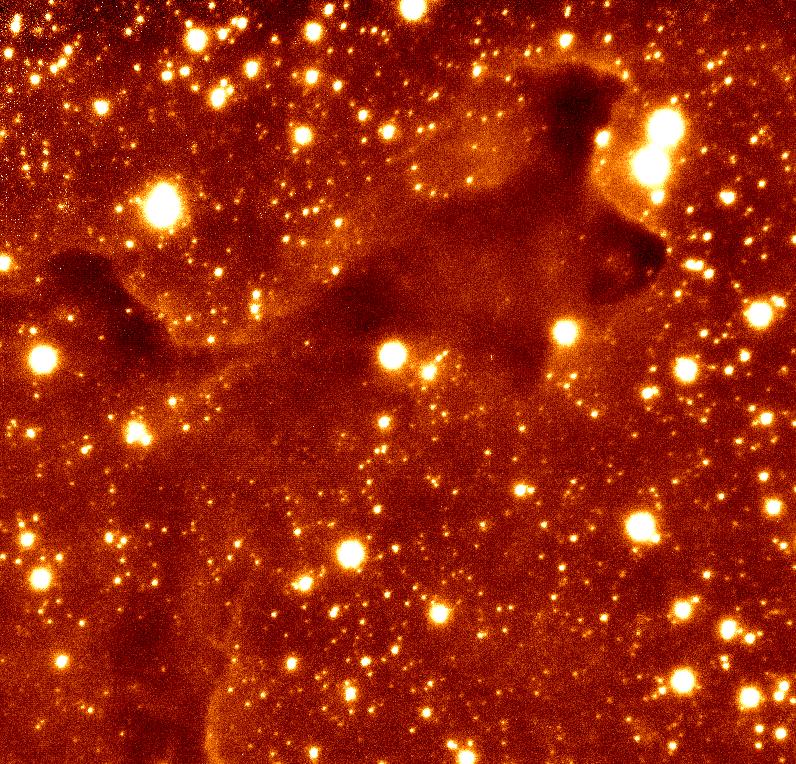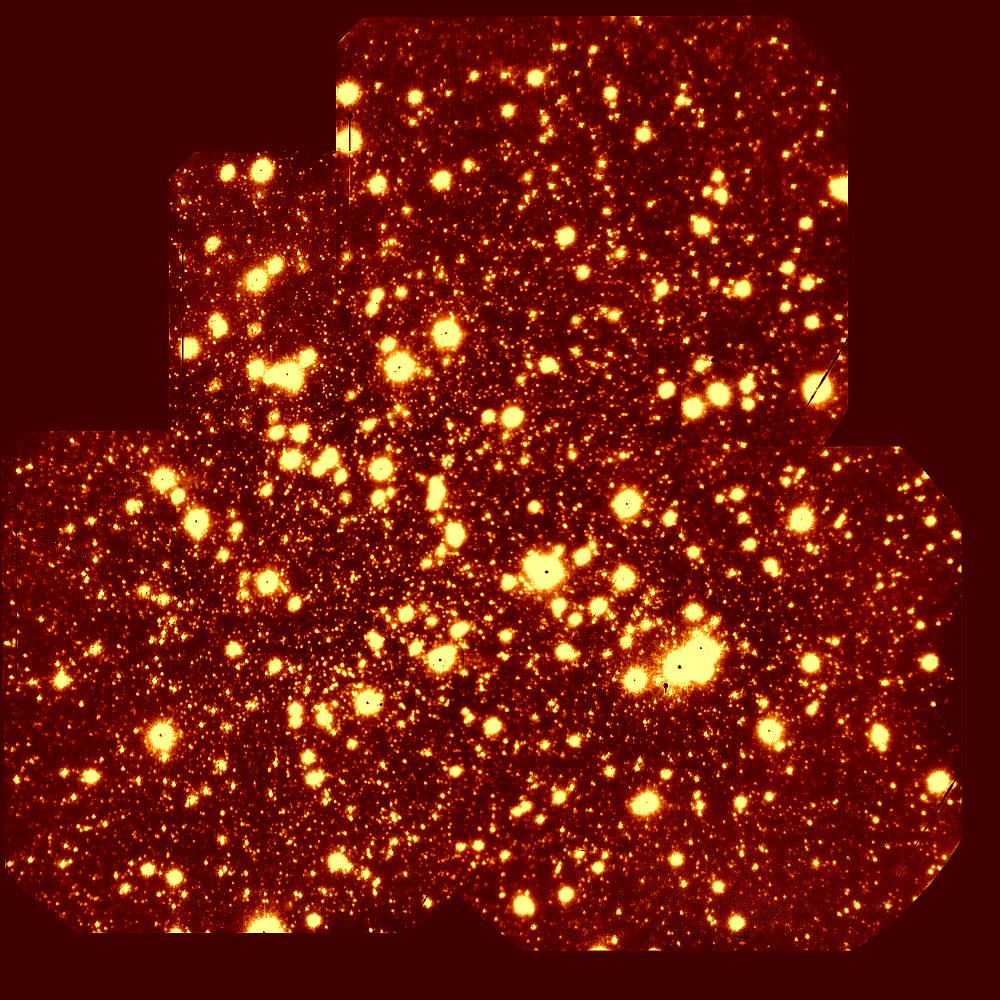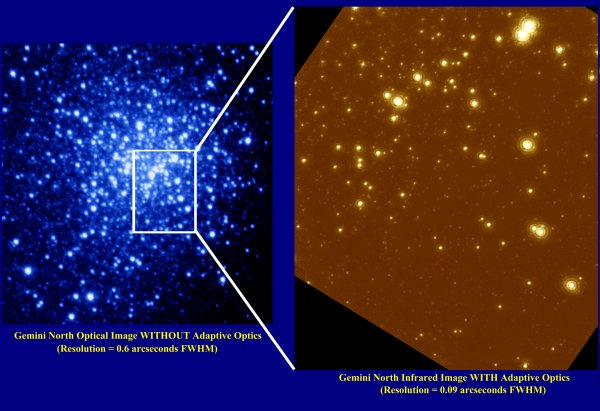![[Principles of AO (IC, London)]](genao_small.gif)
![[Principles of AO (IC, London)]](genao_small.gif) |
Gemini Adaptive Optics Program |
![[BD+30 with Hokupa'a]](bd30_cap.jpg) |
Overview of the Gemini AO Program |
This document presents a brief overview of the Adaptive Optics (AO)
Program for the Gemini telescopes. This program includes both Mauna
Kea and Cerro Pachon AO facilities. We present a summary of the
current status of the program, and introduce its proposed
evolution.
The current AO program at Gemini comprises Altair, a natural guide star (NGS)/laser guide star (LGS) adaptive optics system for the Mauna Kea telescope, and Canopus, an LGS system for Cerro Pachon. A multi-conjugate adaptive optics (MCAO) system is being built for Cerro Pachon as the key element in the Gemini South AO program. This system will deliver uniform AO-compensated image quality over a nearly 2 arcmin field of view, with on-axis performance of the order of or better than Altair's. It is expected that this system, in conjunction with a well-thought-out instrumentation suite, will address a significant fraction of the JWST science programs six years prior to the JWST launch, as discussed in the MCAO feasibility study document. Work on the integration of the main MCAO components (including Canopus, the optical bench equivalent of Altair) has begun at Gemini South, and commissioning is scheduled for the 2nd and 3rd quarters of 2007.
Adaptive Optics has been a high priority at Gemini since the very beginning. "Outstanding image quality" is one of Gemini's key requirements, and AO has always been seen as the way to achieve this goal. The Abingdon report and the Aspen science program clearly show that AO is needed for most of the science programs targeted by the Gemini user community. An AO program was outlined early in the project, including provision for facility systems both at MK and CP.
Altair. The MK AO system has been defined in detail; it is the AO system Altair (ALTitude conjugated Adaptive optic system for the Infrared Red). The Altair contract was signed in 1997 with the DAO, Herzberg Institute for Astrophysics, Victoria, Canada. Altair passed successfully the conceptual design stage, preliminary design and critical design reviews (CDR in 02/1999), and has been in operation on the Gemini North telescope since 2003. A field lens conjugating the deformable mirror to the ground was added in late 2005, allowing AO correction over fields as large as 40".

Figure 1: Planetary nebula, M2-9, imaged by NIRI/Altair in three near-IR bands, compared with an HST/WFPC2 optical image of the same object.
Altair LGS retrofit. The use of laser guide stars (LGSs) greatly increases the sky coverage of an AO system, and is necessary to address most of the science programs as defined in e.g. the Abingdon report. Fitting Altair with an LGS involved upgrading the instrument, specifically by building a LGS dedicated wavefront sensor (WFS) and various interfaces to the Gemini-built LGS launch system. The laser was built under contract by Coherent Technology and delivered to Gemini North in February 2005. First light was achieved in May 2005, and commissioning completed in the summer of 2006.


Figure 2: First results from technical commissioning of the laser guide star, from May 2006. Left: the Eagle nebula. Right: Globular cluster, M13. For more details, see this Altair news page.
Early 1998, the possibility arose to use the UH AO system Hokupa'a early after the MK telescope first light. This was motivated by the desire for early access to AO capability before the facility instrument Altair was available, and was also expected to be (and was!) a very useful tool during telescope commissioning. A memorandum of understanding was signed between UH and Gemini in late 1998. Hokupa'a went through some modifications to make it compatible with the f/16 input beam and the mechanical interface with the Instrument Support Structure (ISS). A new deformable mirror was also retrofitted. Hokupa'a was installed in late May, and obtained nearly diffraction-limited images only days later, in time for the dedication. Some of these images are shown below. The performance was fully compatible with the expectations derived from the numerical simulation codes available at both UH and Gemini. AO-compensated images with Strehl ratios of 15-30% and Full Width at Half Maximum (FWHM) of 70 to 100 milliarcsec were obtained regularly during the pre-dedication run, with seeing values of 0.7 to 1 arcsec. Although the instrument was retired in 2002, astronomers continue to exploit Hokupa'a data from the Gemini Science Archive.

Figure 3: The globular cluster NGC6934 imaged in the visible with the Gemini acquisition camera (left), and with the Quirc IR camera and the UH-AO system Hokupa'a (right).
Following the recommendations of the April’99 Cerro Pachon workshop review panel and a request from the Gemini board of directors, a feasibility study for multi-conjugate AO (MCAO) was performed, discussing the rationale of building such a system. It includes a sub-sample of the science case, theoretical analysis of MCAO control, numerical simulation assessment of the performance and engineering feasibility, a proof-of-concept optical and mechanical layout, assessment of the computing issues and a management plan including schedule and resource needs. At the conclusion of this feasibility study, no fundamental, theoretical or technological limit was identified that would prevent implementing a MCAO system. The MCAO system is now under construction at Gemini South.
1.3.1 The Rationale

1.3.2 The System
The principles of MCAO are described in some detail in the feasibility study. The basic idea is to compensate for the turbulence in a 3-dimensional fashion, by having several deformable mirrors conjugated to different altitudes, instead of the single ground-conjugated deformable mirror in classical/existing AO systems (see also the introduction to MCAO). Using this technique, MCAO is able to reach on-axis NGS AO type performance, with a uniform PSF, over a 1+ arcmin field of view.
The basic advantages of an MCAO system with respect to more conventional NGS or LGS systems are:
Implementing an MCAO system is more complex than a conventional AO system. However, for an 8-m class telescope all the required technologies are available except the laser systems. The minimum requirements for each laser are no greater than those for the MK-LGS laser system for Altair. The principal difficulties are the opto-mechanical design, the implementation of multiple laser guide stars, and the controls. With appropriate design trades these issues can be overcome. Our feasibility study presents a proof-of-concept opto-mechanical design only slightly more complex than Altair, a simple laser launch configuration, and a control system with requirements similar to current high-order AO systems. For example, a MCAO system with 3 deformable mirrors of order 12x12, 14x14, and 16x16 can be fit into the current Gemini space requirements, be driven with commercially available processor electronics and would require four laser guide stars sensed with a single, 128x128 pixel low-noise CCD detector.
1.3.3 The Instruments
To take advantage of the image quality and field of view
delivered by MCAO and address most effectively the science
programs defined in the Abingdon report and the 2000 Gemini/CfAO
Santa Cruz MCAO workshop, three classes of instruments have been
defined:
Last update July 14, 2006; J-R Roy & R. Mason